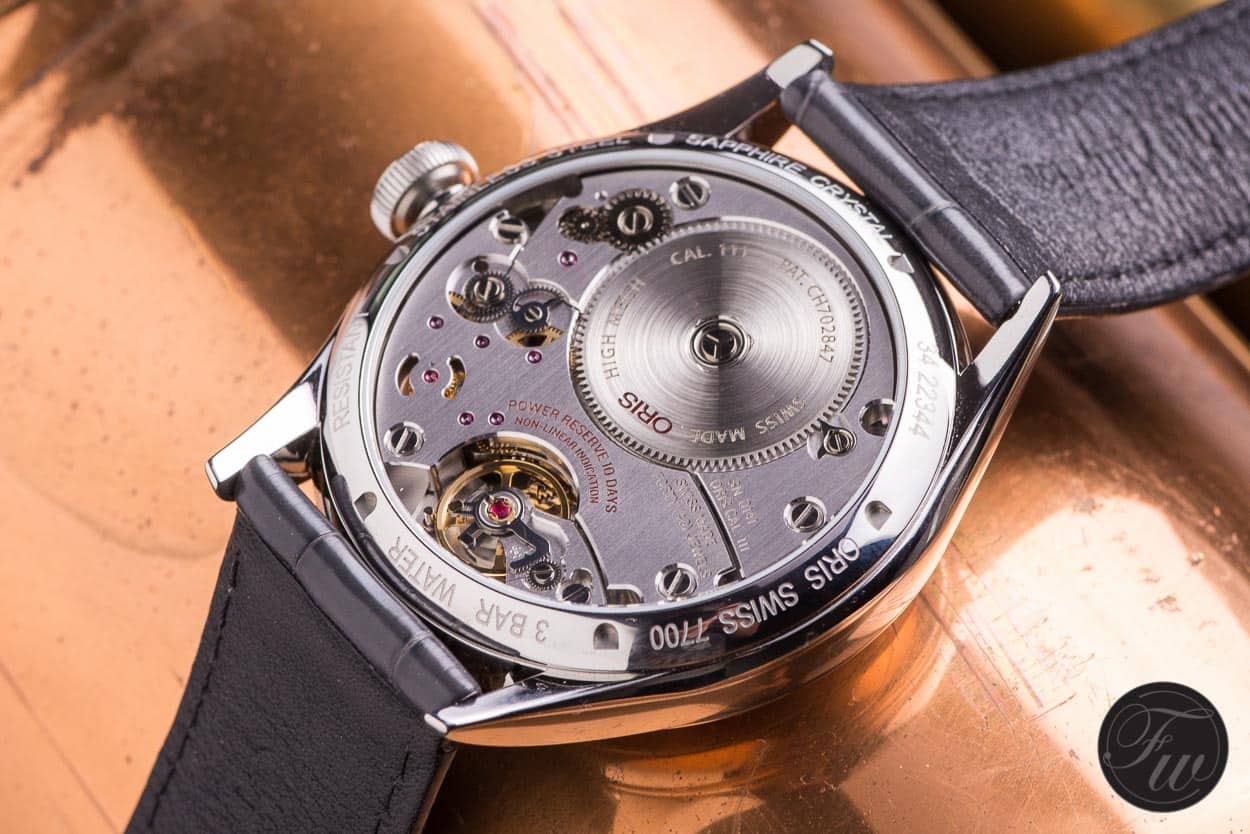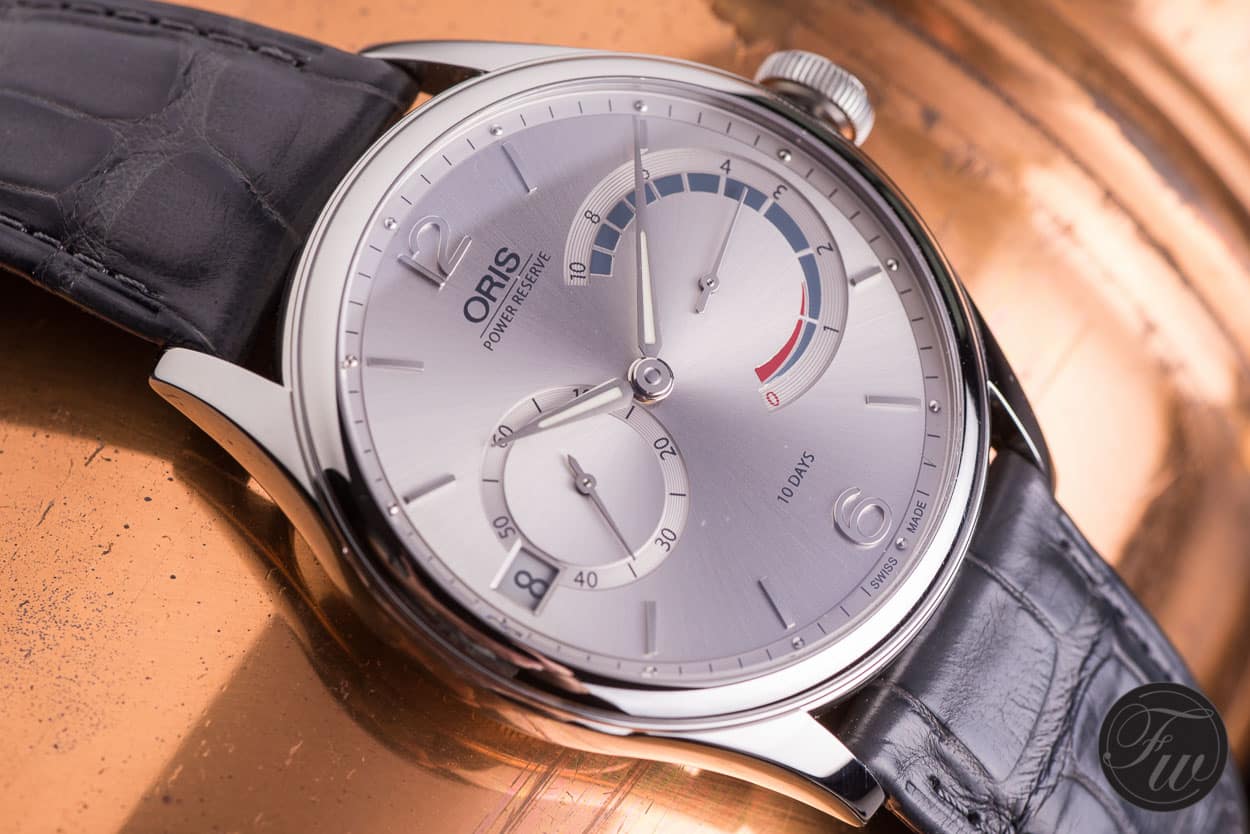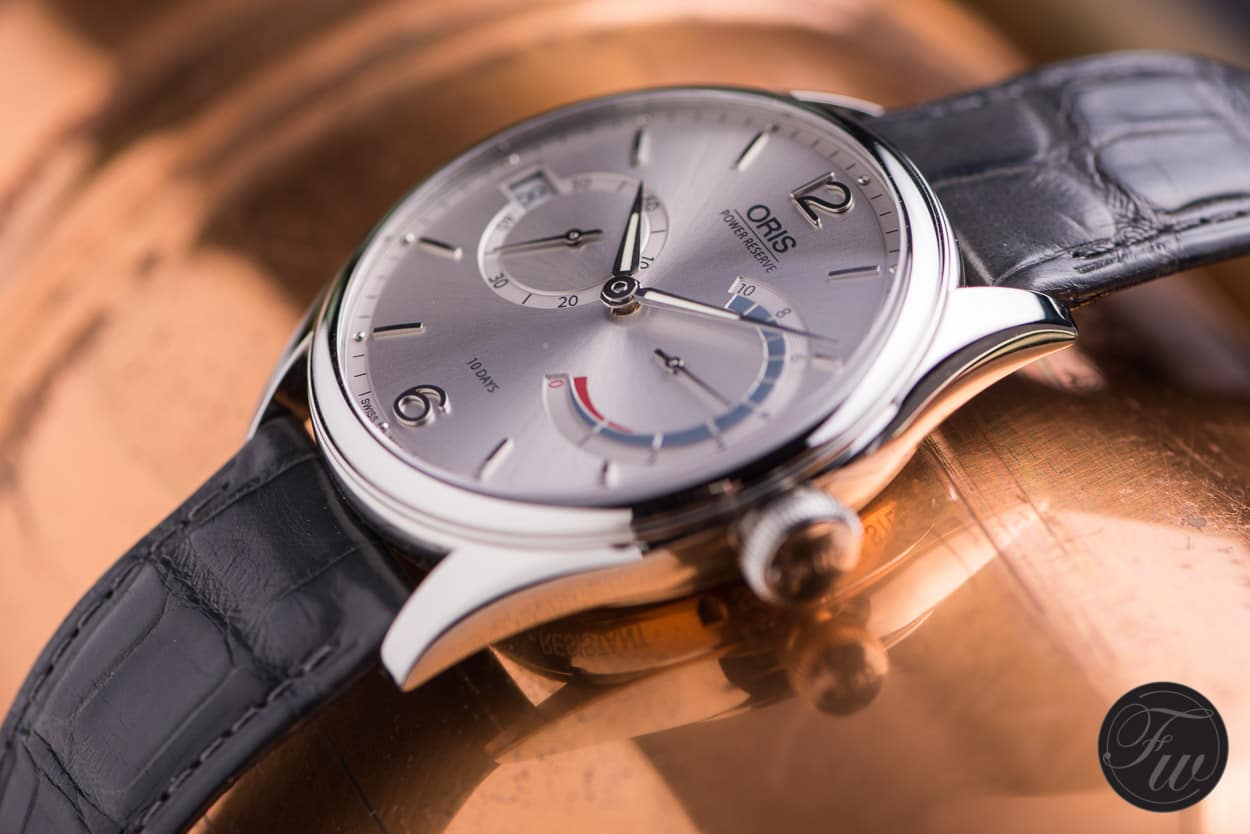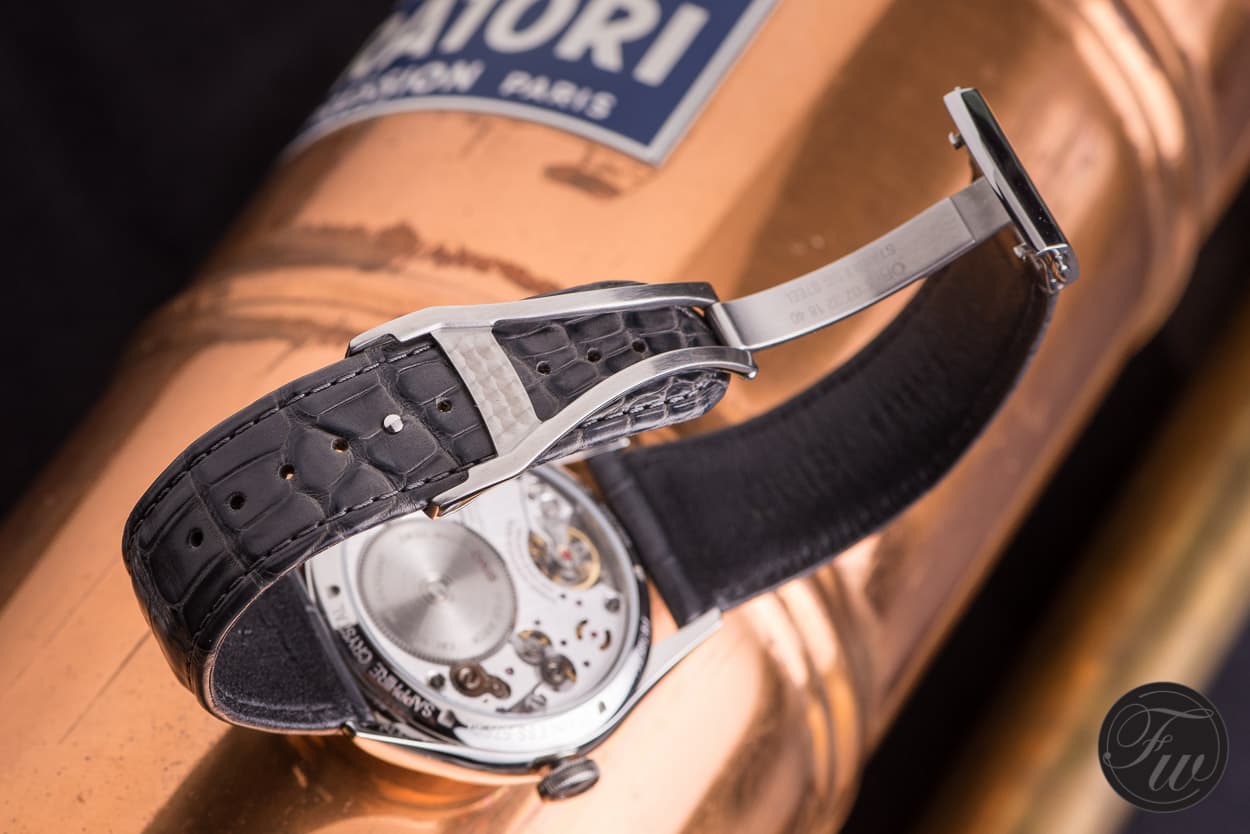Hands-On Oris Calibre 111 Review – An Oris Artelier Timepiece With In-House Movement
“Real watches for real people” is the slogan of Oris and although I seldomly take these kind of lines very serious, this one does make sense actually. Real people, like you and me, who have to save-up for a nice watch, a real watch. Don’t be mislead by all the images of tourbillon watches or minute repeaters shown everywhere, they only represent a very small market. Oris showed us that they were able to move the watch industry, or more important, its consumers, with their €1700 Euro Sixty-Five divers watch. Where a lot of other brands were occupied last year with increasing prices and trying to justify these to their clients (retailers and consumers) during the SIHH and BaselWorld, the talk of the town was Oris with their Divers Sixty-Five timepiece.
So, how does that work for the Oris Calibre 111 – part of the Oris Artelier collection – that I am reviewing here? It has a €5100 Euro price tag, which is far away from the €1700 Euro Sixty-Five watch. Before I want to try to answer that question, let’s have a look at the watch first.
Oris Calibre 111
It is interesting that Oris just named this watch after its new in-house developed movement. Sure, it is also being used in the Oris Big Crown Big Pilot watch, but for this timepiece from the Oris Artelier collection, the name of the watch equals the movement reference. In 2014, Oris introduced their in-house developed caliber 110 movement for their 110th anniversary (Oris was founded in 1904) and this immediately gives away where caliber 111 comes from and what caliber number we can expect this year in Basel.
The caliber 110 movement was only used in their limited edition anniversary watch in 2014, only 110 pieces made in stainless steel and another 110 in 18kt gold. The new caliber 111 is based on the same design, but has an additional date aperture and is not limited or restricted. This 34mm movement is currently being used in 11 different Oris references. It is a hand-wound movement with a central hour and minute hands, small seconds at 9 o’clock and a power reserve indicator at 3 o’clock. The power reserve indicator is non-linear, as you can see on the image above. It also has a small red indicator when things get a bit critical concerning power reserve and the movement needs a bit of winding. With a power reserve of 240 hours, an excellent companion for weekdays for instance and you’ll be able to pick the watch up again after the weekend without having to correct the time and date.
Oris Calibre 111 Dial
Which brings me to the appearance of the Oris Calibre 111. At first sight, I did see some resemblance with a Portuguese 8-Days from IWC. Mainly because of the two large registers at 9 o’clock and 3 o’clock and the combination of large dial and small bezel. That’s where the comparison stops basically, but in a flash you could be confused.
The Oris Calibre 111 is a classy looking wristwatch that I would classify as a dress watch, I guess nobody will disagree here. The silver dial with a fine Sun burst finish and applied indexes amplifies this.
On the dial we read Oris, ‘Power Reserve’ and ’10 days’. That, on top of the power reserve indicator is perhaps a bit much, but Oris likes to emphasize on this in-house developed movement with 10 days of power reserve.
The hands are lumed with Super-LumiNova which makes the watch readable in low-light conditions.
 Calibre 111 Case
Calibre 111 Case
The Oris Calibre 111 case measures 43mm but due to its sleek design it sits very comfortable on the wrist. Not a single moment I was thinking that it looked too big for a classic watch. The dial is very large and the bezel very thin, which makes it appear that the case is almost invisible except for the thin lugs. It is a bit of an optical illusion of course, as the high polished bezel and case band are certainly good for a few extra millimeters. The lugs are curved and bend a bit downwards to the wrist, without actually touching the wrist like so many other watch cases do (and I don’t like them sticking in to my wrists). The watch rests nicely on the wrist due to its flat case back (and sapphire crystal).
The polished bezel has a little step and the sapphire crystal is slightly domed. It seems like the sapphire crystal is sticking out a tad bit, but I actually like that extra ‘step’ above the bezel. There are no sharp edges anywhere on the case of the Oris Calibre 111 which makes it a very comfortable watch to wear. The all-polished finish of the case is very nice although I never mind a bit of a contrasting brush or satin finish. However, it the all-polished finish suits the Oris Calibre 111 perfectly.
The ribbed crown is signed ‘Oris’ and although flat, it is still fairly large which makes it easy to grasp and operate. Pull the crown to position one and you can set the date, pull it to position two and you can set or correct the time.
Leather strap and folding clasp
The strap measures an unconventional 23mm between the lugs (perhaps to force you to only replace it with an Oris strap?) and made of croco leather. The grey-ish (some times it looks like grey-blue) matches the dial perfectly, with its blue accents of the power reserve indicator. This strap is easy-to-go with about any type of suit color or even a jeans. It also gives you a perfect excuse to buy a pair or matching grey colored shoes and belt, instead of always the same brown or black. The strap is very soft and one of the most comfortable ones I’ve tried in a long time to be honest. It is slightly padded but certainly not too much, some straps ‘suffer’ from obesity these days, especially near the lugs.
The stainless steel folding clasp has a sublime finish and matches the sleekness of the case. It feels very comfortable on the wrist and certainly not too thick. There are two release buttons that need to be pushed in order to release the clasp.
More About The Movement
Although I already touched the in-house developed movement, there is more to say about Oris movements. As you know, Oris often relies on third party movements from ETA and Sellita for most of their models. They need to, in order to keep their watch affordable (“Real watches for real people”) for people who love mechanical watches but don’t want to spend thousands. The Oris Aquis Date for example, which we reviewed here, is an amazing piece of quality for around 1400 Euro. I also mentioned the 1700 Euro Oris Divers Sixty Five model that came out in 2015 and turned out to be a huge success for the company from Hölstein.
In the far past though, Oris made their own calibers and was very successful at doing so. However, like many other brands, Oris also suffered from the quartz crisis and was acquired by the ASUAG group in 1970. ASUAG later became Swatch Group (1983), together with SSIH. Oris became the brand for relatively cheap watches and finally became a sleeping watch brands. The brand that once had six (!) manufactories and produced a high number of in-house movements, was being reduced drastically. In 1982, there is a management buy-out by Rolf Portmann and Ulrich W. Herzog (the later CEO). They acquired all the shares again from ASUAG and word is, that one of the terms from ASUAG was that Oris had to use ETA movements from then on. So their use of ETA movements had nothing to do with cost-saving like so many other brands did at the time (like Longines), but they were restricted to do so. Another interesting detail is that the brand resurrected in 1984 with their Oris Big Pointer Date which was hyped by mainly young watch enthusiasts from the country that caused the quartz crisis, Japan.
Anyway, it must have been very sour for Oris to hear – a few decades later – that they can’t use Swatch Group’s ETA movements anymore. Currently, most movements in Oris watches are from Sellita.
Oris is now in the in-house movement game again with their caliber 110 and 111 movements. However, this also comes at a price, as the Oris Calibre 111 I have here has a list price of 5100 Euro. Far away from the mentioned prices for their Divers pieces, but still far more affordable than a lot of other brands out there with in-house movements with a 10-day power reserve.
Summary and Verdict
Perhaps I focused a bit too much on the movement in this article, but the name (Oris Calibre 111) of this watch alone suggests that it is a lot about the movement. That said, Oris came up with a beautiful sleek designed watch to host their new caliber 111 movement. I’ve found it to be a great companion, especially when wearing cuffs or a sweater. It is winter time of course, but I can’t image myself wearing this piece with a t-shirt or polo shirt during better weather conditions, it is a bit too classic for that in my opinion. But that also heavily depends on your own style and preferences of course.
The watch itself wears extremely comfortable, even with its 43mm case diameter. I am also very fond about the croco leather strap and the folding clasp, while I am normally more a fan of normal buckles. Reading time and operating the watch is very easy, but I do have to note that a full wind of the watch (to make it run for 240 hours), takes a long, long time.
At a price of 5100 Euro (including VAT), this Oris Calibre 111 is a higher priced than most other Oris watches. You could say that 5100 Euro brings them into a difficult position, as consumers can also buy an Omega with Co-Axial in-house movement or Rolex Datejust for example. However, you could also say that for 5100 Euro, you get a watch with in-house movement that has an interesting feature (10 day power reserve) instead of a rather plain watch with in-house movement. Or better said, do you want to be the guy with the same Rolex or Omega on the wrist as your friends and co-workers or do you want to be a bit different? Not everyone is in favor of wearing a watch from one of the big brands.
In my opinion the 5100 Euro for this Oris Calibre 111 is completely justified, also compared to the competition out there on the market and what they are offering for this kind of money.
More information on www.oris.ch























